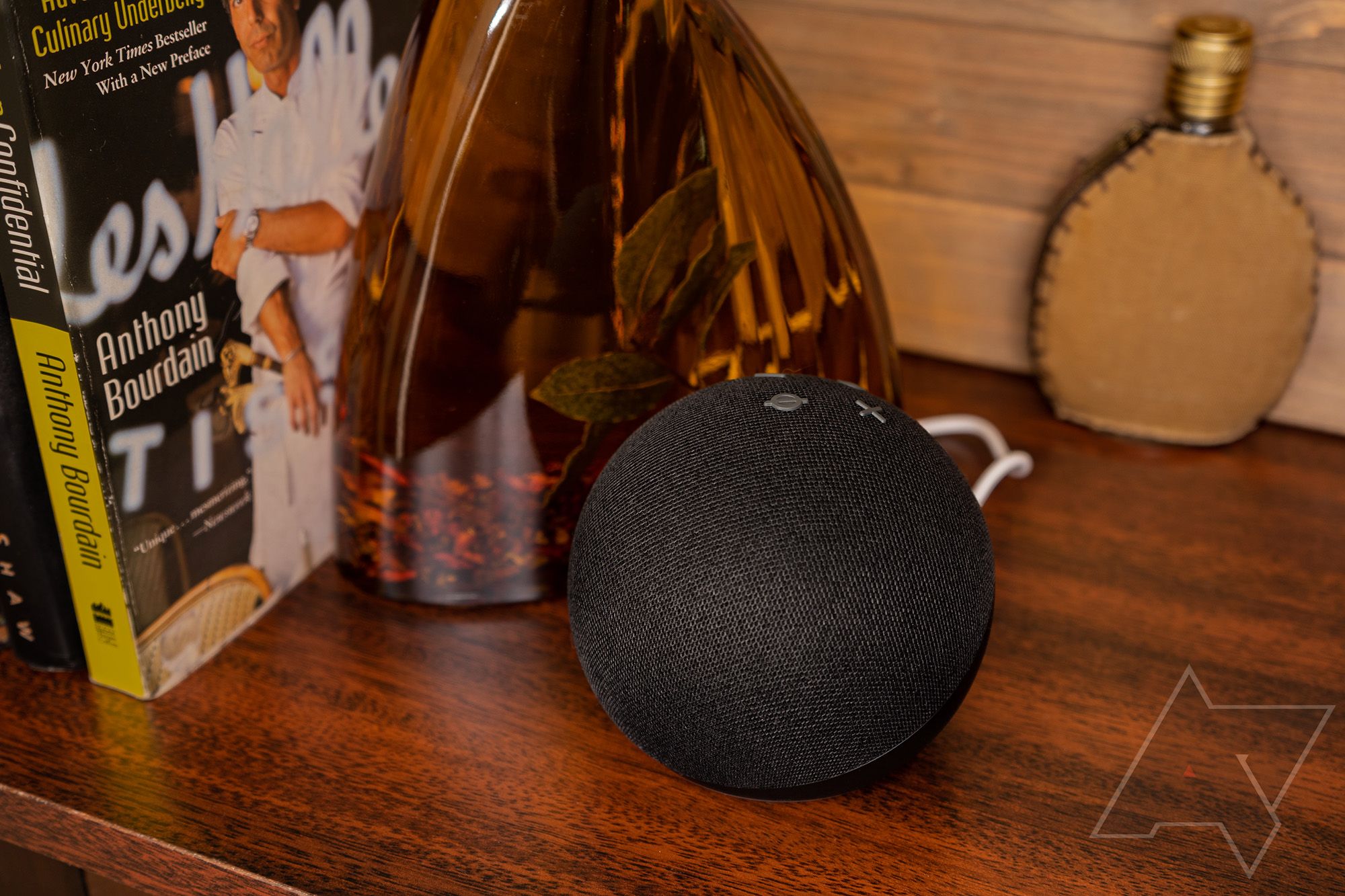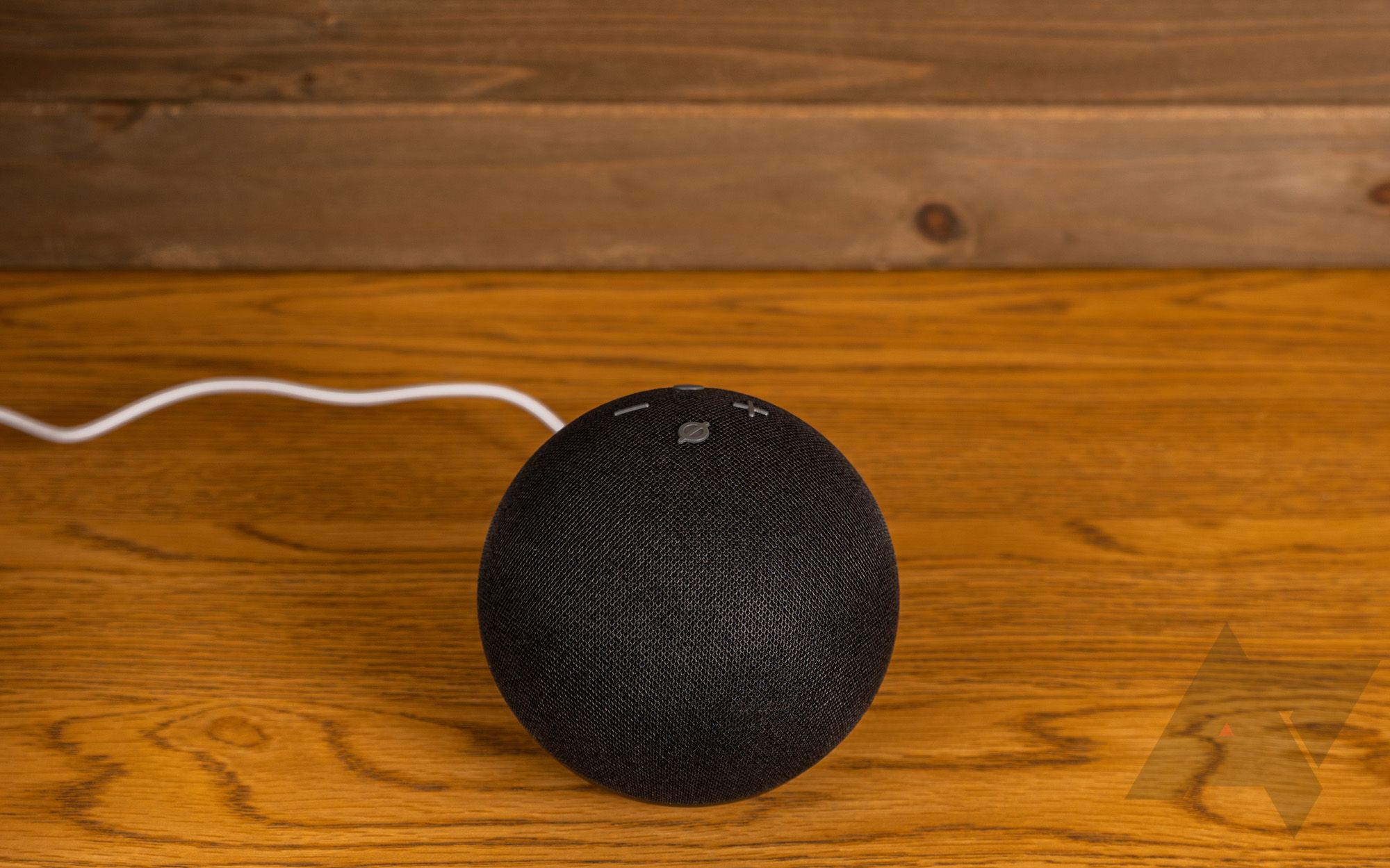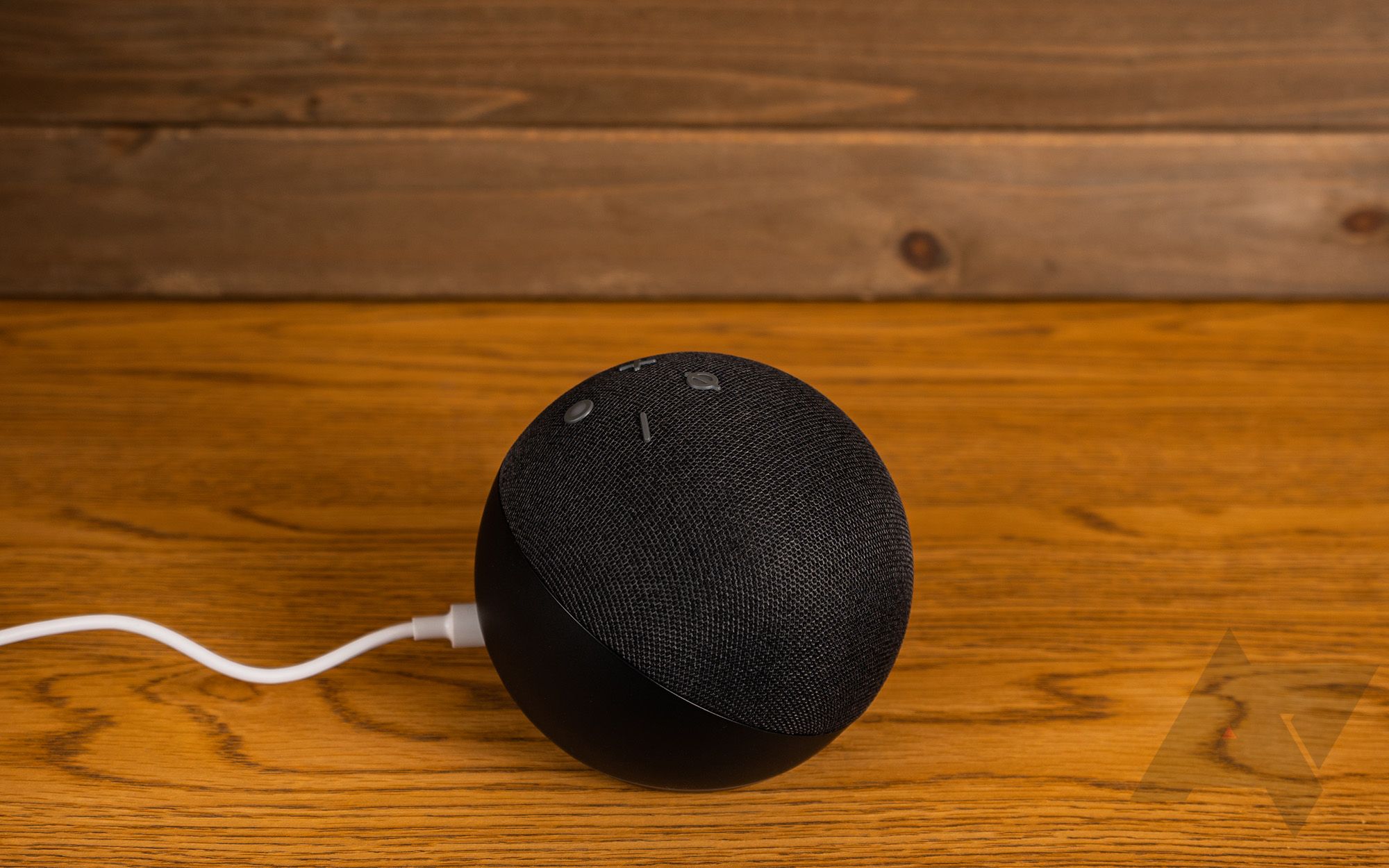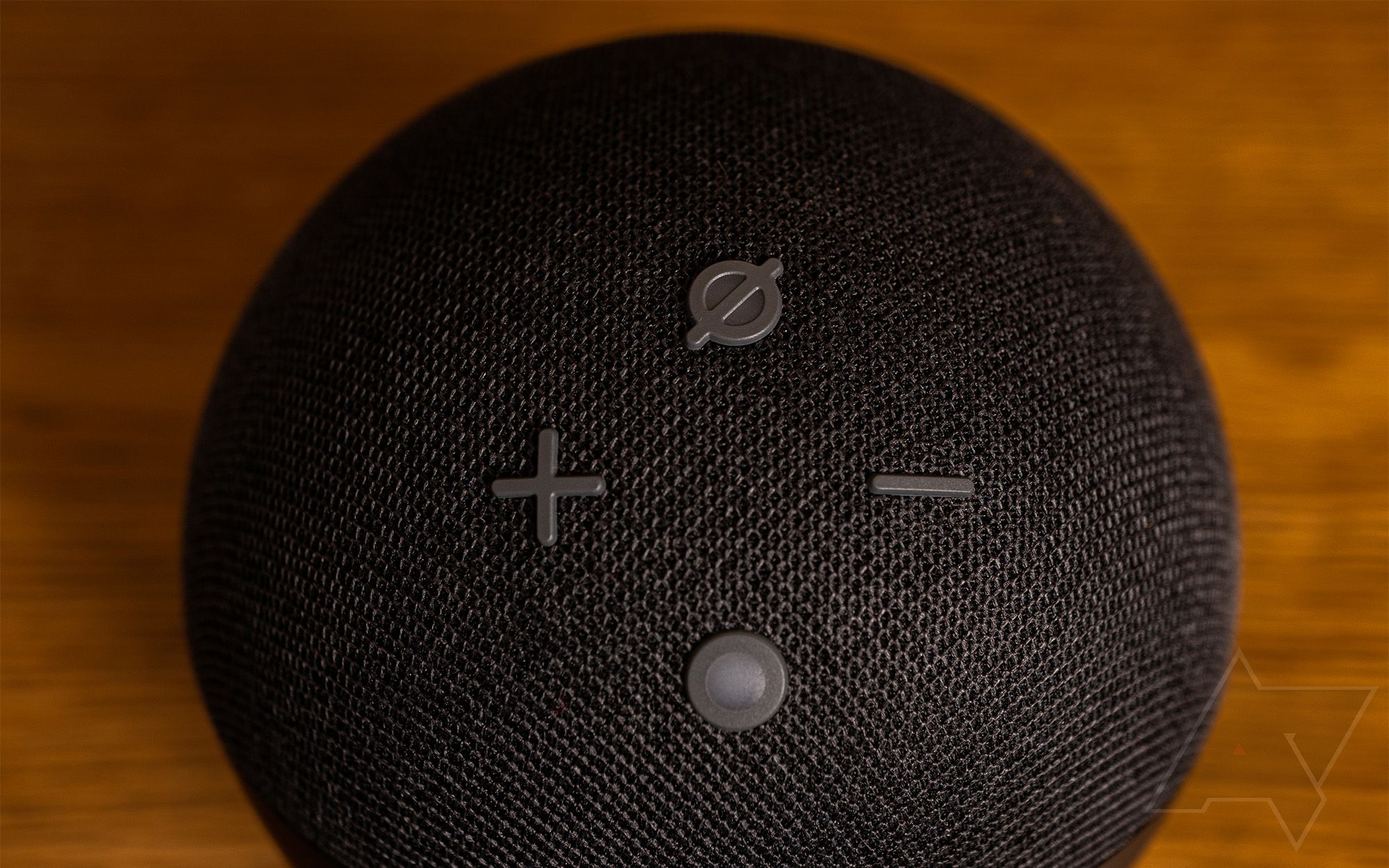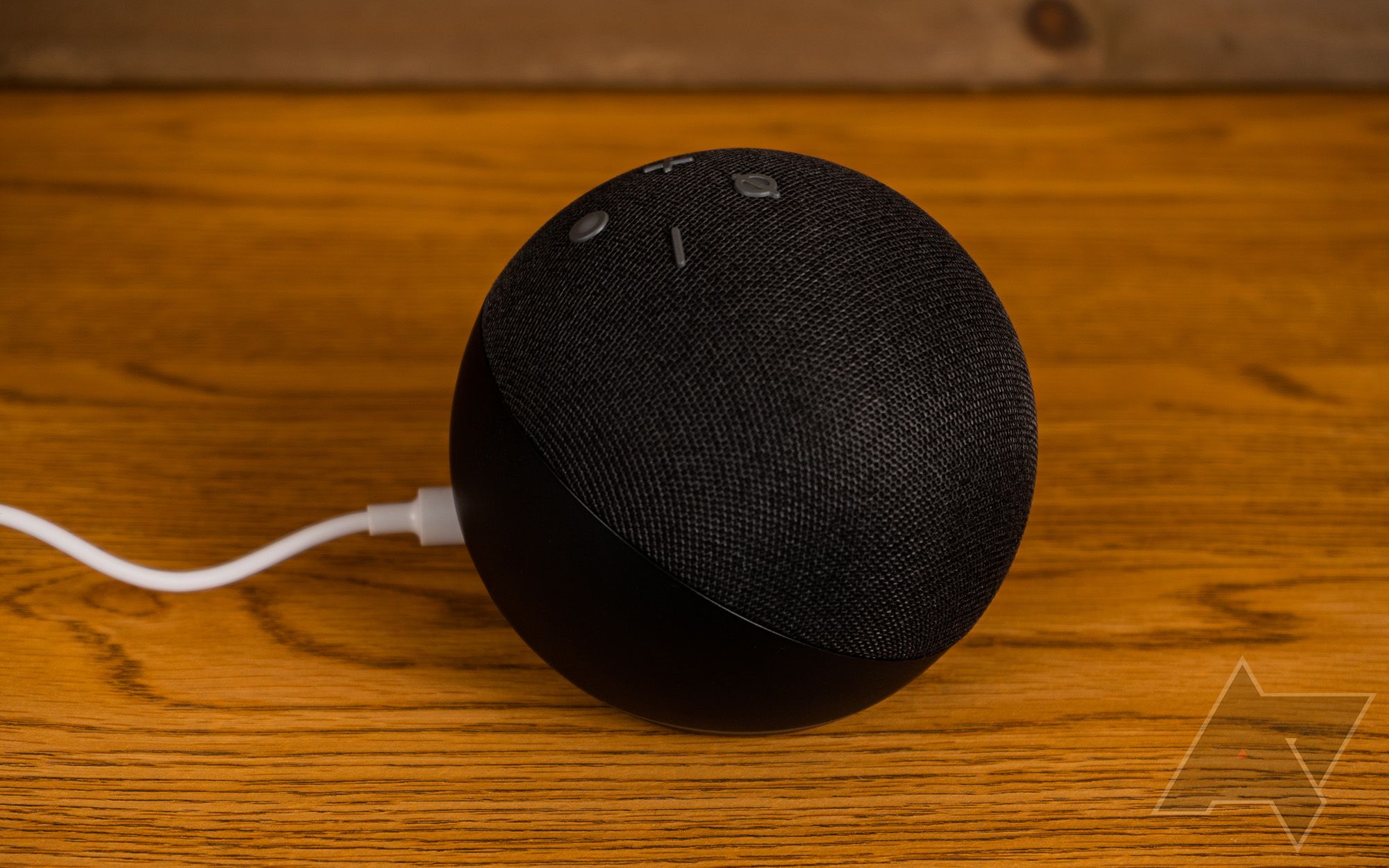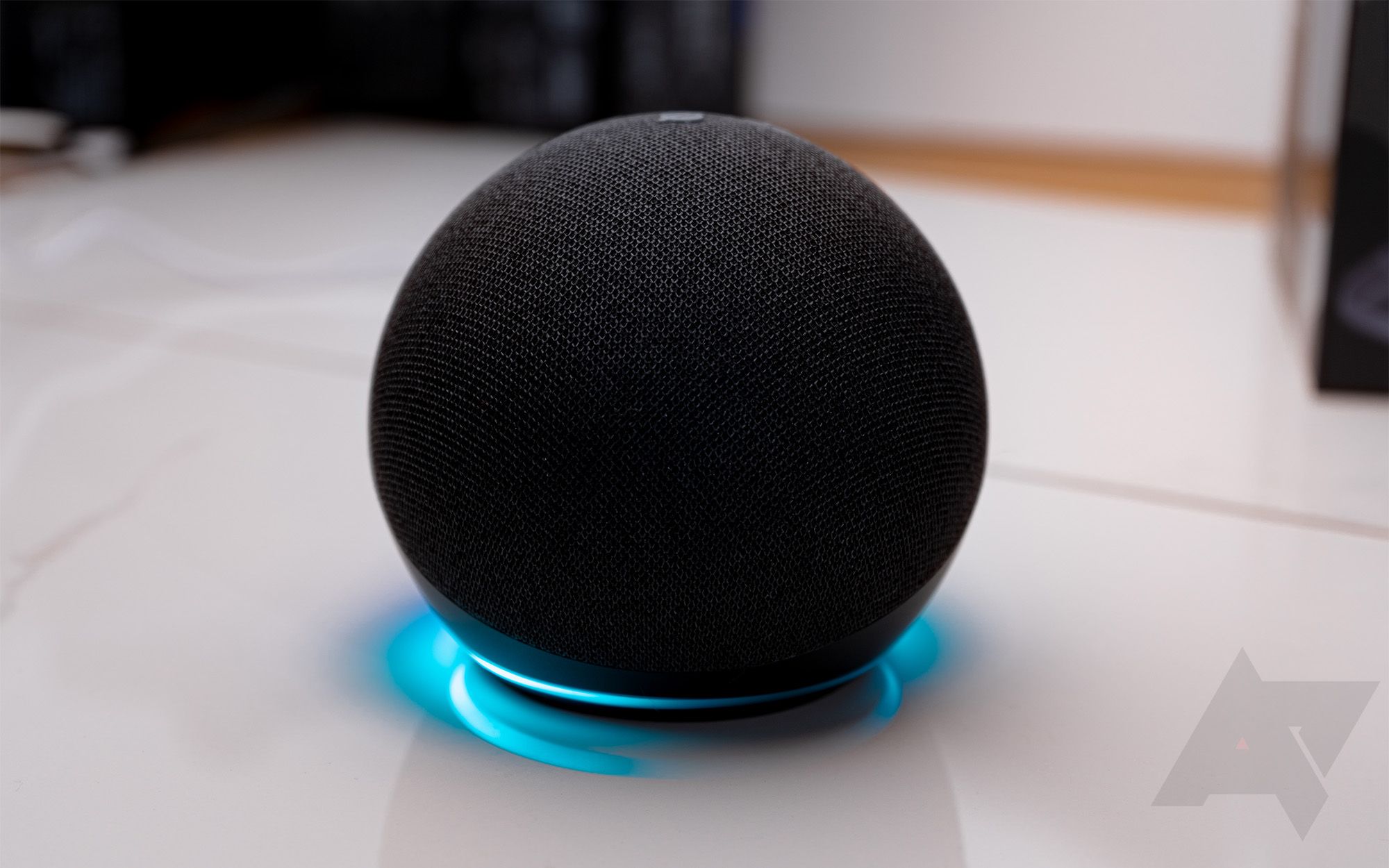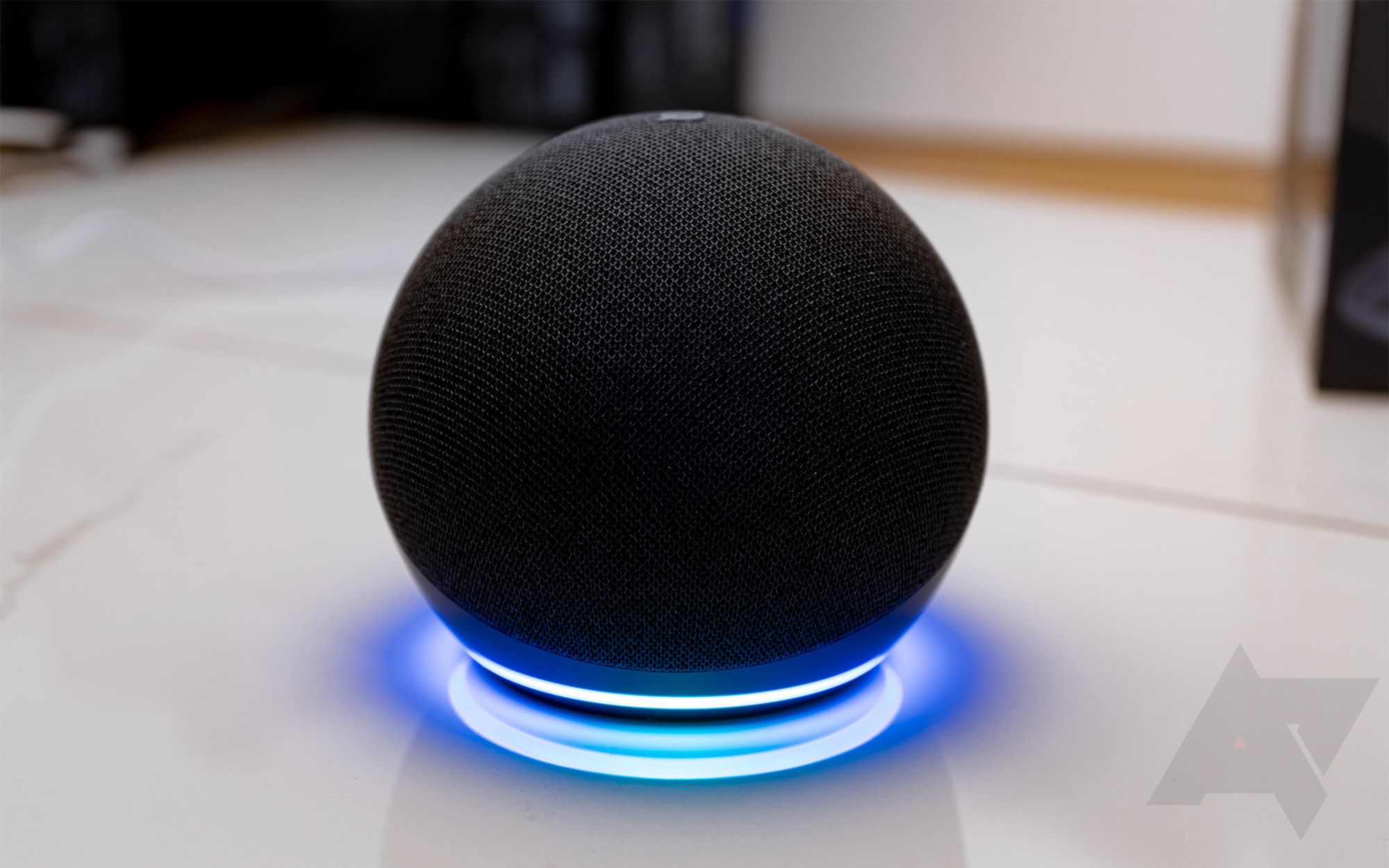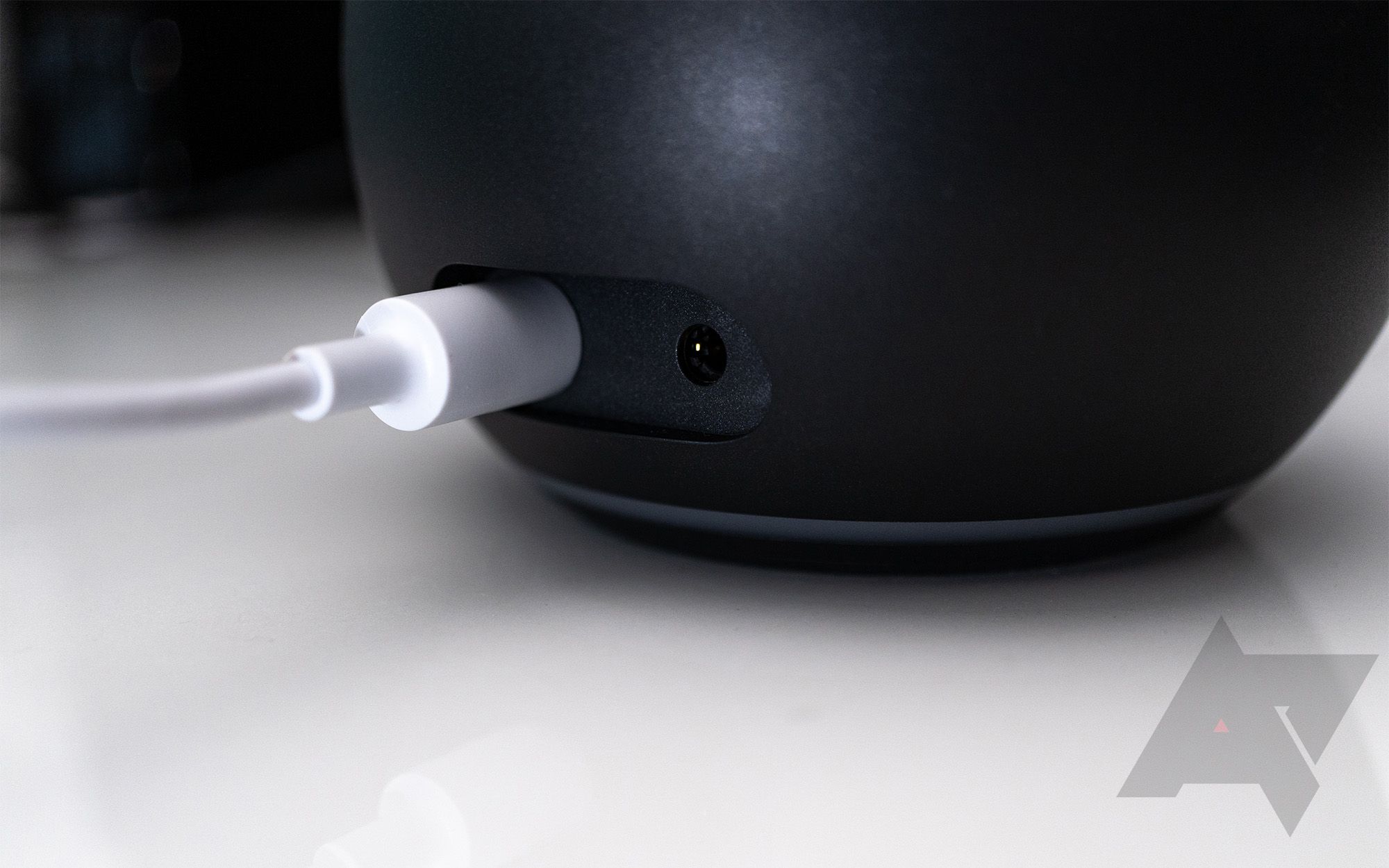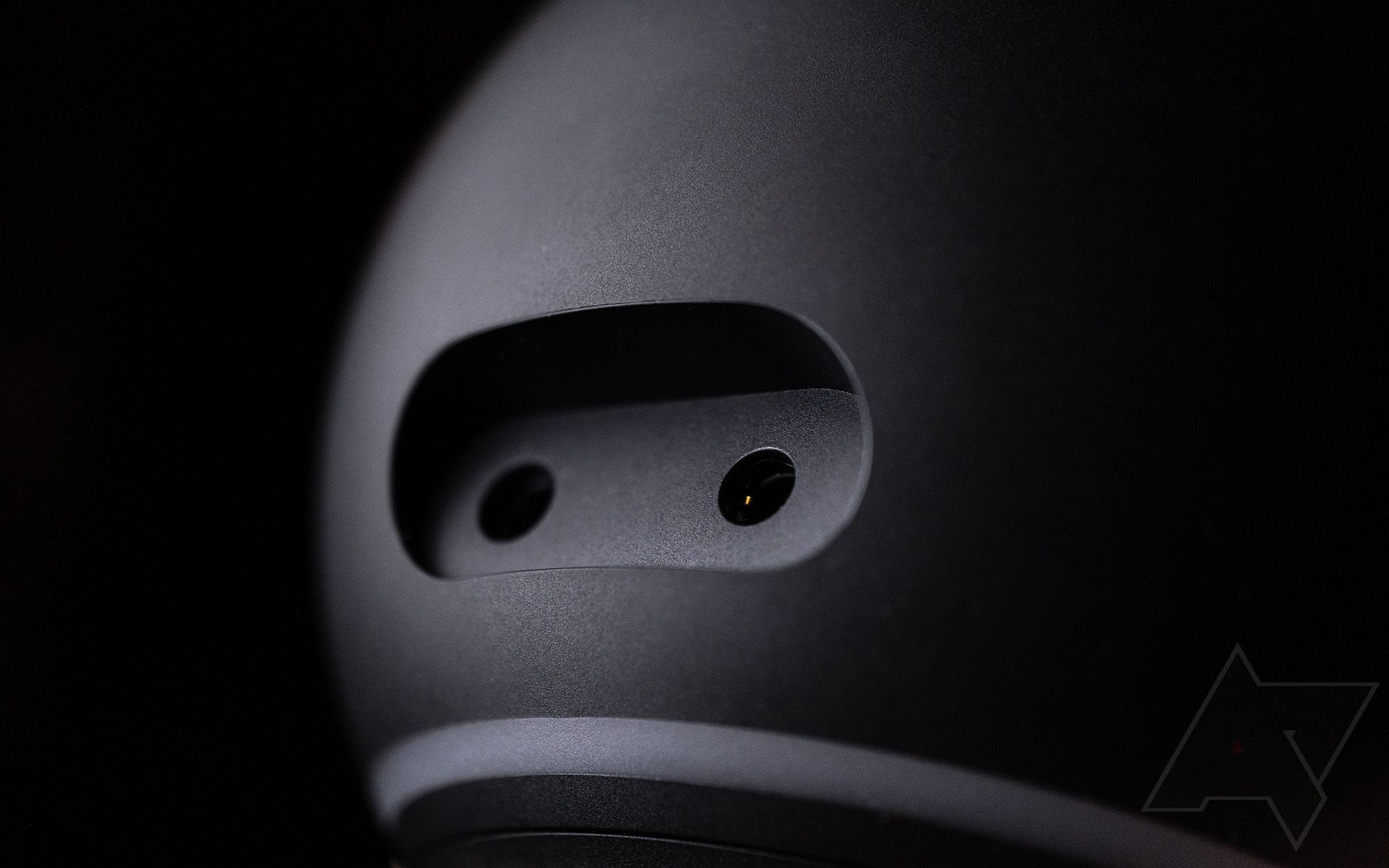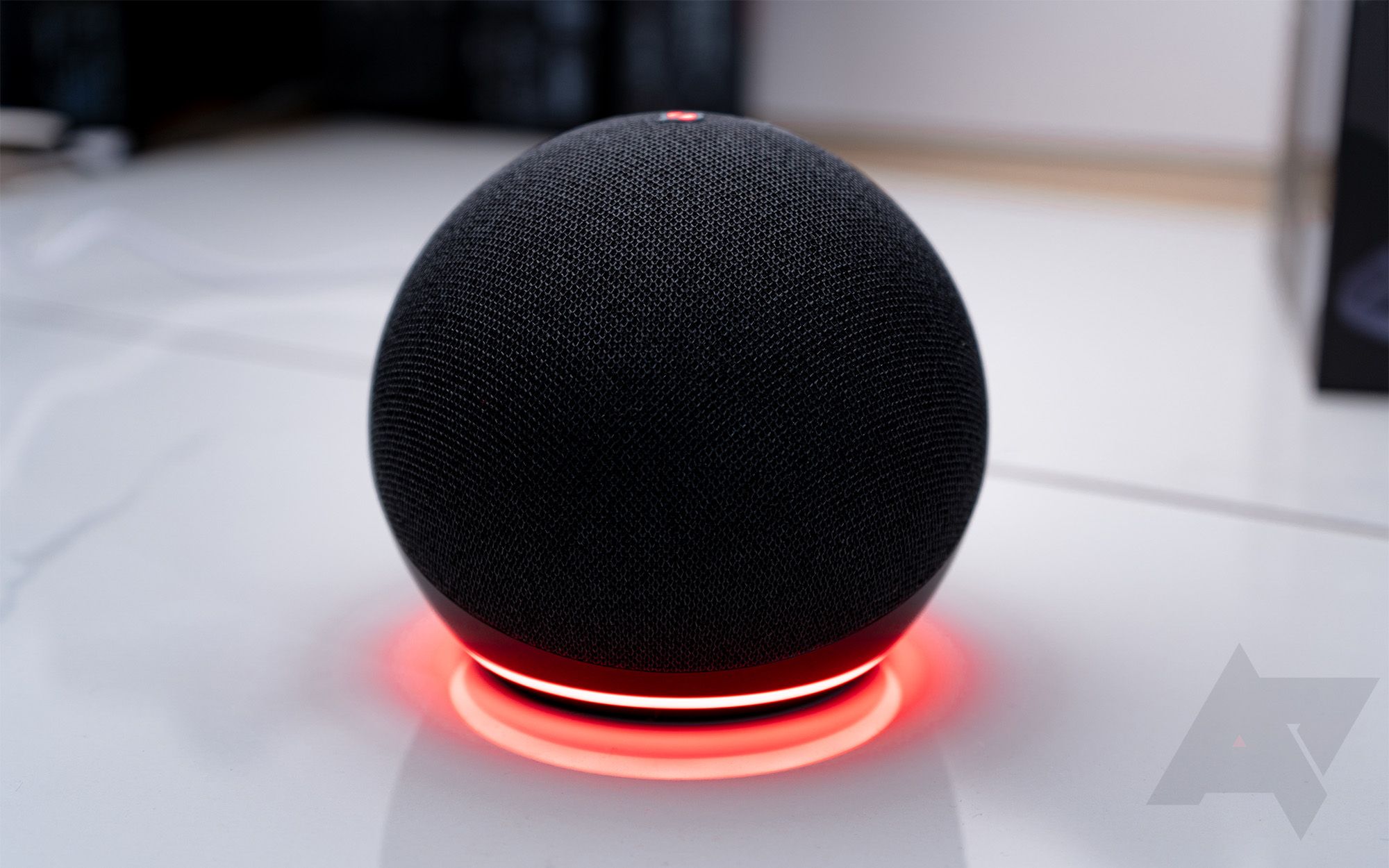Amazon effectively kicked off the sweet smart speaker market with the launch of the original Amazon Echo in 2015. The product line has gone through several evolutions and expansions since then, but for many customers, the Echo Dot has been a key entry point into the ecosystem thanks to a budget-friendly price and support for the full range of Amazon’s services. Now in its fourth generation, it adopts the new look of the larger Echo while retaining all of the qualities that made the original Dot popular.
Amazon Echo Dot (4th gen)
The fourth-generation Echo Dot delivers all of the features of Alexa for a very budget-friendly price. Sound quality won’t impress music lovers, but it performs well enough for casual listening, and it can be plugged into high-end speakers to effectively upgrade them with Alexa and any supported music service.
- Brand: Amazon
- Display: none
- Dimensions: 100 x 100 x 89mm
- Weight: 328g
- Clock: No
- Integrations: Amazon Alexa, Matter, Zigbee
- Audio: 1.6” speaker
- Connectivity: Wi-Fi 5, Bluetooth 5.0
- Ports: 3.5mm audio out
- Colors: Twilight Blue, Charcoal, Glacier White
- Driver size: 41mm
- Microphone: Yes
- Microphone switch: Yes
- Power source: Wired
- Audio in/out: 3.5mm audio output
- Controls: Physical, voice assistant
- Tightly integrated with Amazon’s services
- Alexa is an effective voice assistant
- Subtle design that doesn’t draw too much attention
- Mediocre sound quality
- Power cable doesn’t match all models
Design, hardware, what’s in the box
The 4th generation Echo Dot leaves behind the hockey puck shape of the 3rd generation and instead mimics the design of the larger Echo, adopting the same spherical shape and most of the attributes. While it won’t fit quite as easily into tight spaces, the softball-sized speaker is small and subtle enough that it can easily be ignored if it’s sitting among a small crowd of other things on a desk or shelf. It’s covered in a thin layer of cloth on the top and around most of the sides, save for an angular line of plastic on the lower third. Photos in this review show the charcoal version, but it’s also available in white and blue.
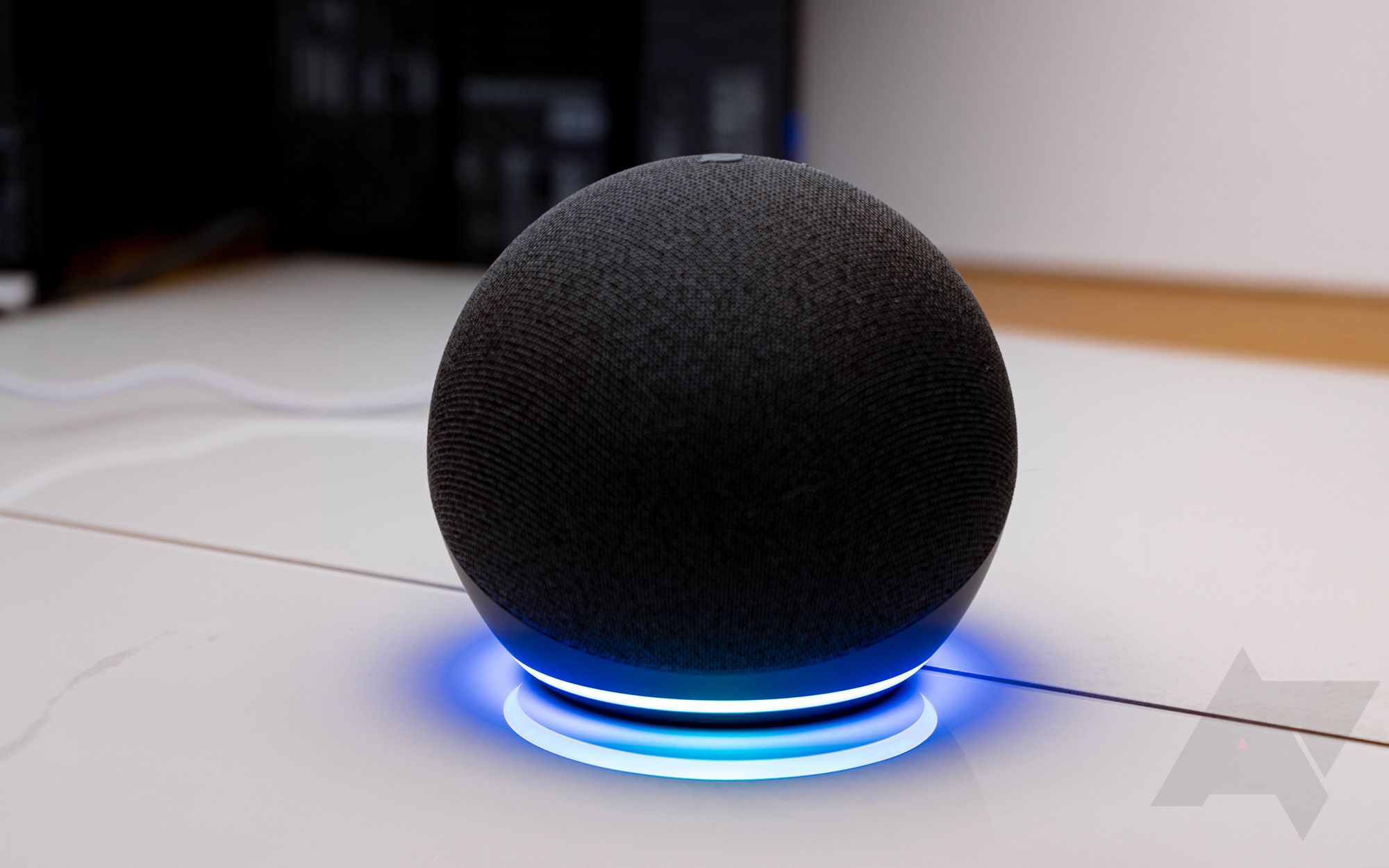
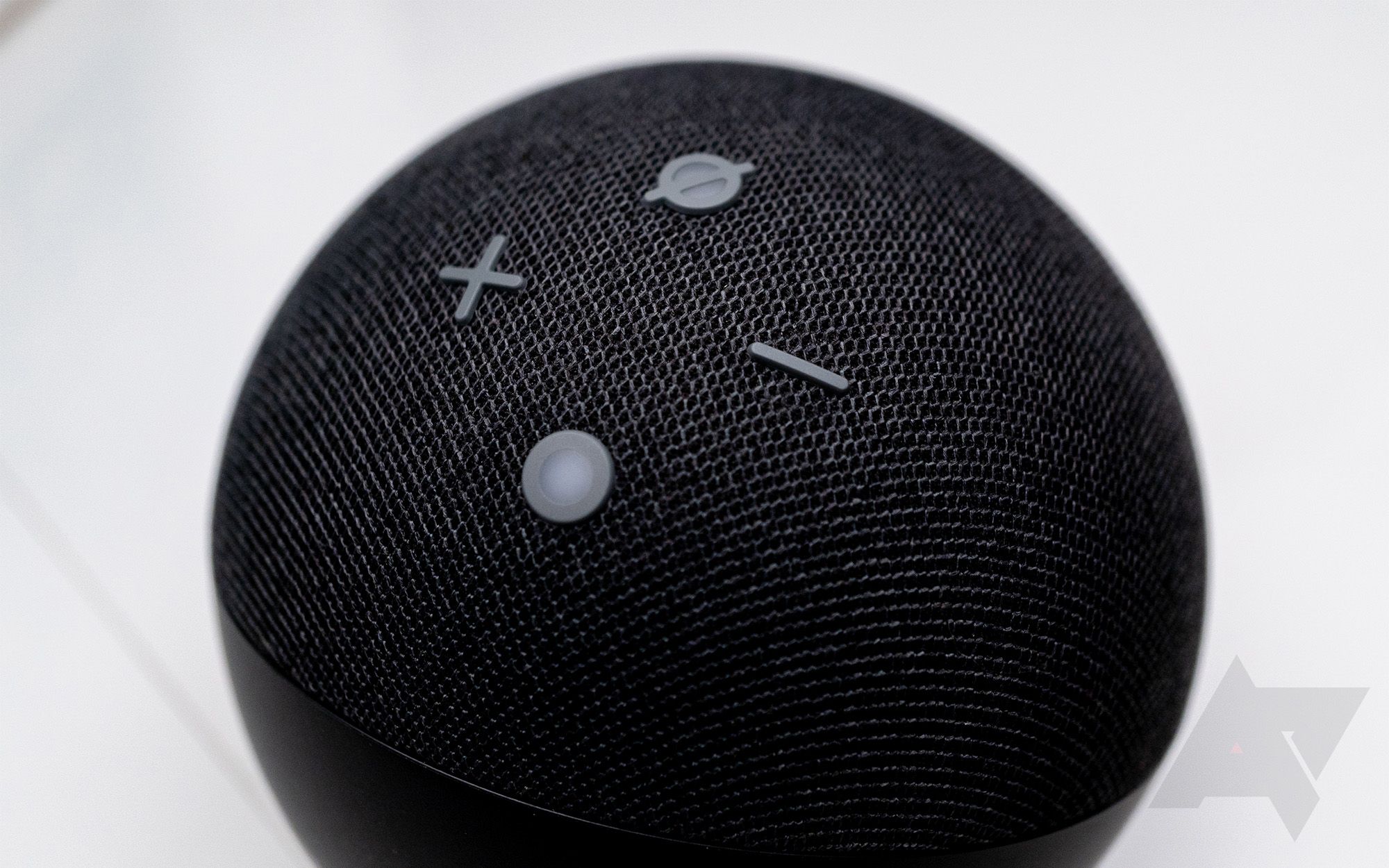
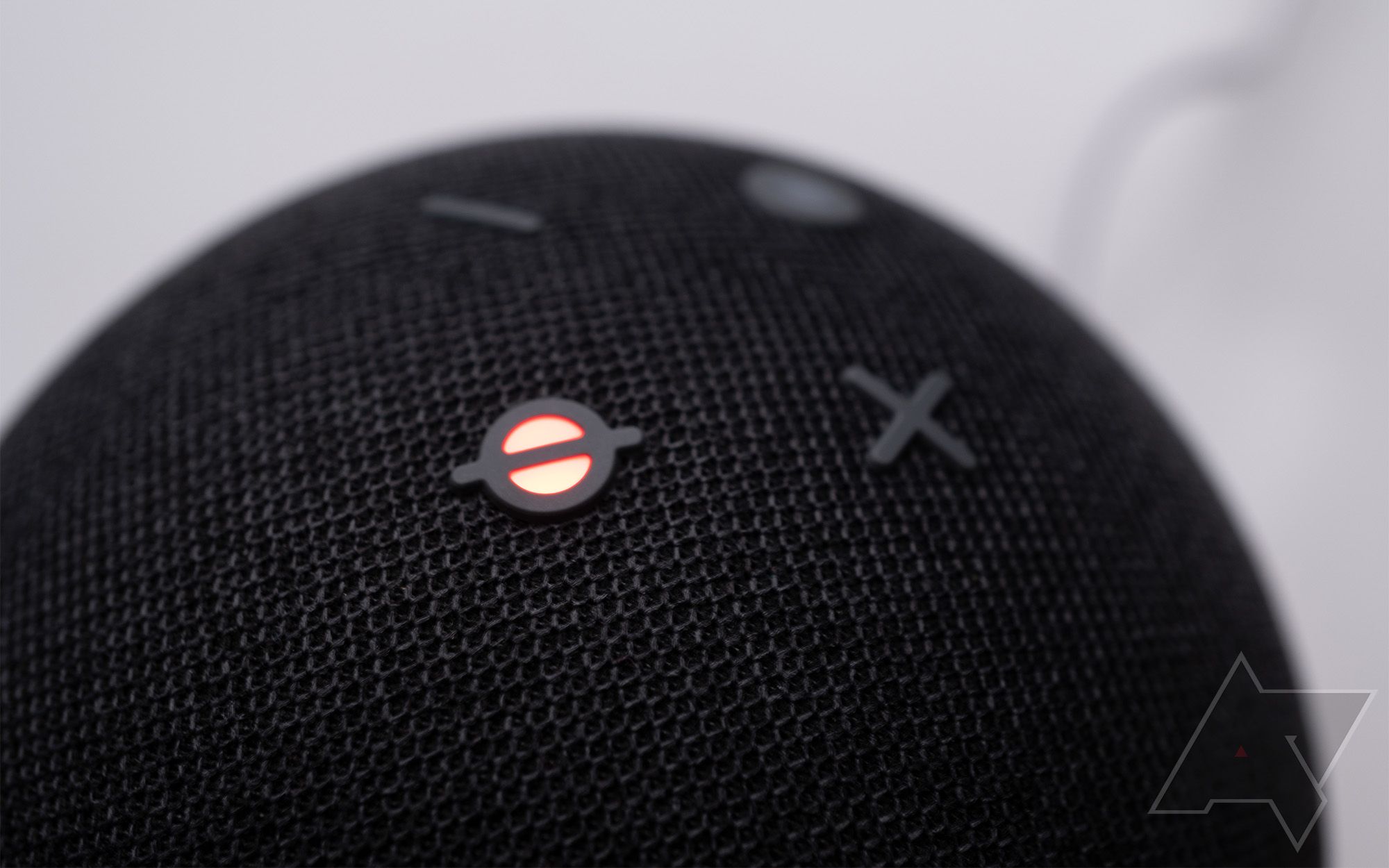
The classic bright blue light ring encircles the base of the sphere, only lighting up when Alexa begins listening or plays a response. Four buttons are located on the top of the globe, offset slightly toward the rear. There are two buttons for controlling the volume, one to mute or unmute the mic, and one to activate listening mode without having to say the wake word.
A small cutout on the rear side provides a port for the power cable and a 3.5mm audio jack that can be plugged into external speakers. That feature is missing on the latest smart Echo displays, like the Echo Show 8, much to the chagrin of long-time Alexa users. Just be aware, the included power cable is always white, regardless of the orb’s colorway.
Audio quality
Let’s just get this out of the way now — the Echo Dot isn’t really meant for music; and that’s okay, as long as you know what you’re buying it for. It’s perfectly good for communication with Alexa and listening to most podcasts. It’s even fine for playing music at low and moderate volume, but weaknesses in audio quality become apparent fairly quickly as it gets louder.
Given the size and price of the Echo Dot, you would be right to assume it doesn’t produce much bass. Amazon seems to have compensated for this by electronically boosting the low end, which works alright on songs that don’t emphasize bass notes, but it produces a noticeably flat tone and sometimes disappears altogether. Boosting the bass in this way also causes an imbalance with the mids that can drown out vocals. This can be somewhat corrected by turning the bass down with the EQ settings in the Alexa app, but be prepared to hear basically all treble.
The Echo Dot isn’t really meant for music; and that’s okay, as long as you know what you’re buying it for.
What I didn’t expect was that the frequency response across the higher range is also a bit sketchy. The speaker sometimes produces a tinny sound, almost like it’s clipping at some frequencies. It’s not noticeable at low volume, but this effect becomes reminiscent of old laptop speakers as they get louder.
Overall, the Echo Dot is not bad for listening to music, and for older music that hasn’t been mastered for a very high dynamic range, it will probably sound just fine. This just isn’t the right choice for an audiophile.
In more general performance, the Echo Dot can actually get pretty loud at max volume and does a good job of projecting sound in all directions — though there’s still a clear sweet spot directly in front of it. Also, if you have a pair of Echo Dots (they must be from the same generation), they can be configured as stereo speakers.
Software and features
The setup process for the Echo Dot is fairly similar to that of most other smart speakers. After plugging it in, a jarringly loud voice directs you to use the Amazon Alexa app to complete the setup. If this is your first time setting up an Alexa device, it takes a few minutes to record a voice ID and configure several details. It’s not overwhelming, but be prepared to be asked for permission to access your contact list and location, both of which you can refuse. Once the initial setup is complete, you don’t technically need to keep the app installed, but it can be used to manage or add Echo devices, browse skills that can be added, and look at additional details that may appear in response to voice queries.
After setup is complete, the Echo Dot asks you to try some voice commands. The first instruction asks for restaurants that will deliver, which ironically produced names for three businesses that I know will not deliver as far out as my address. The following steps pitched Amazon Guard service to me, tried to teach me to reorder products from Amazon, and finally pitched Amazon Music Unlimited. By the end, I felt like Amazon wasn’t trying to be subtle about treating me as a source of cash.
Adding smart home devices to Alexa is about the same as adding them to Google Assistant, though the Alexa app feels slightly more tedious to use for configuring the location of each device — but neither app does this very well. While some old hardware might be exclusively compatible with Alexa, I couldn’t find anything in my collection that doesn’t work with both ecosystems, and they both seem equally adept at handling commands for all of my hardware.
Comparing smart voice assistants is complicated and somewhat treacherous territory, and there’s a lot to know about Amazon Alexa or Google Assistant. However, as a long-time user of Assistant, I often had to be more careful with my commands for Alexa. For example, my first organic question was to ask for the weather tonight and tomorrow night, something Assistant can easily answer. Alexa didn’t understand I wanted two responses and instead replied with just the forecast for tomorrow night. Alexa also lacks some of the simple niceties that Google incorporated, like being able to say “stop” without using the wake word to cut it off during a long speech. On the other hand, it’s borderline blissful to simply say “Alexa” — or any one of five wake words — instead of the tiresome, “Hey Google” line. Alexa also seems far less prone to randomly activating, though I can’t be sure if this would match everybody else’s experience.
Should you buy it?
Maybe. It really depends on what you’re looking for in a smart speaker. The Echo Dot can be a fantastic choice if you want a voice assistant with tight integration into Amazon for shopping and services. It’s very affordable, especially since it goes on sale frequently, making it easy to deploy around the house without spending very much. Audio quality is passable if you listen to music, but the Echo Dot can also be used to upgrade a good non-smart speaker by plugging it in through a 3.5mm audio cable. Alternatively, it doesn’t cost that much more to upgrade directly to the full-size Amazon Echo.
It’s also worth considering a smart display instead of a smart speaker, at least in some rooms of the home. It doesn’t cost much more to pick up an Echo Show 5, but it provides far more function and convenience through the built-in touch screen while still supporting all of the same voice commands.
While Alexa is a powerful and effective voice assistant, both Google Assistant and Siri (if you’re already attached to Apple’s ecosystem) offer generally more advanced speech capabilities with fewer quirks to work around. The Google Nest Mini is priced to match the Echo Dot, albeit with slightly less frequent sales, and it offers comparable sound quality — but sadly lacks the 3.5 audio jack.
Buy it if...
- You prefer Alexa over Google Assistant or Siri
- You order a lot of things from Amazon
- You want a cheap way to upgrade a non-smart speaker
Don't buy it if...
- You aren’t invested in Amazon's services
- A smart display is the better option for your space
FAQ
Q: How does the Echo Dot compare to the Echo Show 5?
The Echo Show 5 and Echo Dot (4th gen) are the smallest and most cost-efficient products in Amazon’s lineup of Alexa-enabled smart assistants. Despite being priced at roughly twice that of the Dot, most people will probably choose the Echo Show 5 since it offers a touch sensitive display that adds a lot of features and controls that simply aren’t possible without a screen. However, neither device has particularly great sound, but the Echo Dot does have a 3.5mm audio out jack for those that want to hook it up to a better speaker.
Q: How does the Echo Dot compare to the Google Nest Mini?
The Nest Mini is Google’s entry-level smart assistant, and it’s very evenly matched with the Echo Dot in both price and features. Both occupy a similar footprint, though the Nest Mini is flat by comparison, so it can slot into a smaller space or look a little less awkward mounted on a wall. Neither device has the strongest speakers, but the Echo Dot is equipped with a 3.5mm audio jack that can be connected to a speaker for a better listening experience. However, the decision between the two will likely come down to choosing between Google’s superior voice assistant versus some of Amazon’s more tightly integrated shopping features.

